Tevis Tips
| July 24, 2014 | Posted by Melinda under Equine Endurance, Most Popular |
I’m not riding Tevis this year, but I’ve decided to share a couple of “tips and tricks” that I’ve figured out over the last couple of years. It’s the little things that I forget from year to year, or that I didn’t know until I actually *rode* the ride.
For those of you that aren’t riding Tevis and don’t care about the blah blah blah in this post….*just* for you I’m sharing some pictures from last year’s 2013 Tevis attempt that somehow never made it onto the blog.
Tevis Tip 1:
Buy your shavings from Echo Valley’s “red barn” at the Fairgrounds.
At $5/bale, I’ve never been able to find it cheaper and it’s one less thing to have to haul with you.
Tevis Tip 2:
Scope out the fair grounds layout and logistics
The map makes it look much less complicated than it actually is – the fair grounds isn’t level and the various terraces and heights make it difficult to navigate from a flat aerial view map. Know where you can park and not park the days before, the night before, and the night of the event.
Tevis Tip 3:
Stay at the fairgrounds until Friday morning, unless you can go up to Robie way before…..But there’s nothing definitive about this, no matter what anyone says. People are successful both ways so do what works best for you and your team and don’t feel pressured to go up to Robie before you are ready.
Tevis Tip 4:
There’s a cut off that isn’t published anywhere about when you can drive into Robinson Flat.
Every year I give a pass to my crew that supposedly allows them to drive up there. And every year they arrive too late – which is always a surprise since I have a seperate crew that goes directly to RF that isn’t driving my trailer or going to Foresthill.
Tevis Tip 5:
Know the vet checks and your strategy for each one.
Some are “one” way checks and you won’t want to vet in right away after pulsing down because all the horse food and water is on *this* side of the vet check.
Tevis Tip 6:
Make a plan and stick to it – but be flexible too.
Tevis Tip 7:
Number your crew carefully.
Tevis Tip 8:
Make your own luck
There’s a lot of luck in Tevis, but you make your own luck too.
One way to make sure you are luckier than not is to try and place yourself where you want to be within a pack when you come up to a technical section.
The granite chief wilderness bog section is one such section, the canyons and CA loop are similar.
In 2013 I wrote about this thought process. Here’s an excerpt:
“As the bogs approached I started looking around me. An experienced Tevis rider who I knew was going to go through the bogs as a good pace with a horse that didn’t refuse was a couple of horses ahead. Good.
Following her was a rider that let his horse tail gate others and rode with his arms flapping and seemed to have very little control. Bad.
And then there was a pair of ladies between me and them.
There were 2 people I knew behind me – both their first Tevis, but both sensible with good horses. I made the decision to stay where I was (not pass or be passed) but to give at least 4 or 5 horse lengths between me and the pair of riders I didn’t know.
Sure enough, there was “drama” going through the bogs and because of my placement and careful attention to wear I wanted to be for that section, I was not involved and kept me and my horse safe and calm while things were sorted out ahead of me.”
Tevis Tip 9:
Ride your own Ride, but don’t steal someone else’s ride
I totally get that you have to do what’s right for your horse and ride your ride, but on the other hand, at Tevis, different from all the rides I’ve ever done…..everyone has so much influence on everyone else’s ride, and sometimes by insisting that you do what’s technically within your rights (such as going backwards through Redstar as one example) you are making it harder on everyone else around you, and that’s not fair either.
Sometimes you can’t ride your best ride at Tevis because by doing so means you take the ride away from someone else, and sometimes you can’t ride your best ride at Tevis because someone by their actions takes a bit of the ride away from you.
Let’s give a specific example. Such as Redstar. It’s a gate and go, meaning that as soon as your horse ‘s pulse is down, you could continue down the trail. Last year, having ridden this ride before I knew that once I vetted in, there was no “coming back” to the troughs and water – and if you do, it REALLY effs it up for everyone else.
There is a one way road that the vet check is in the middle of. The water and hay is on the road, the vet check is on the road a little further up. The trot out goes down the road and if the vet yells at you that they look good, then you mount up and continue on. You don’t trot back up towards the vet.
Not only is this the trail to Robinson flat for the riders…..it is also the only way for trailers to get in and out of the check with the horses – some very sick – that have been pulled. For a trailer to get out, everyone has to move to the side and vetting completely stops until the trailer goes through.
So you can see with all this one way traffic – horses trotting out, trailers going through – coming BACK with a horse because you want to let it eat and drink more, or trying to get through the line without vetting in because you already vetted in but came back makes life a little bit miserable for everyone else.
Going through Redstar backwards isn’t THAT big of a deal – but it does provide an example of the many logistical nightmares that exist at Tevis. This is a relatively minor inconvenience, but there are other places where your actions on the trail have much bigger consequences for those riders around you, beyond just your horse and your ride.
Tevis Tip 10:
It’s a psychological ride.
Taken as a whole, the Tevis trail is probably not the toughest endurance ride out there. It’s not the most technical one I’ve done, it’s not the hottest, and it’s extremely well supported and on an established trail.
What sets the Tevis apart is the hype.
Five years ago when I started my first Tevis, I wish I had known how crucial the psychological component was. I wasn’t lacking in the 100% dedication to finishing if possible and I really wanted it and knew I was capable of the effort. What I didn’t understand was how letting the hype suck me in would contribute to the overall fatigue I felt during the ride, and my ability to manage the hype and pre-event stress would directly impact my ability to manage the ride well.
Our bodies process psychological stress and physical stress the same. Stress is stress and for many of us Tevis is THE big ride of the year and often why we first started riding endurance. It might be impossible to totally push the excitement aside (and why would you want to? Part of the fun of a big ride is looking forward to it!) but managing the psychological stress – whether it’s fear of cliffs, the logistical coordination of your crew, or sorting through the multitude of conflicting advice – will be an important part of your ride.
Tevis Tip 11:
Think carefully before trying something different on ride day *just because* it’s Tevis.
In general would encourage you to not change a successful ride strategy just because it’s Tevis. Having some normalcy will help both you fall into familiar and (assuming) successful strategies that got you to Tevis in the first place.
One common focal point of stress is the pen system at the start. In general, at Tevis if you are used to riding midpack, you will be much closer to the cut offs than you are used to. If you are a dedicated back of the pack, the cut offs will be chasing you unrelentingly throughout the ride. As a result I see lots of people (including myself at my first Tevis start) tempted to change their start strategy to make “every minute count”. People that normally start in the back find themselves milling around with a 100 other horses as they wait to start.
Even though I typically finish mid to top 1/3 of my rides, I *always* start at the back. Psychologically it’s an important part of my ride. After a lot of internal debate, I decided to stick with this strategy at Tevis starting from the first time I rode Tevis in 2009. I was confident in my tack and my time management skills so knew it was unlikely that I would have to stop in the early miles for SNAFUS, and if I *did* have to fix something, I would be much more relaxed if I had minimal people around me instead of being in the middle of a pack of horses. It worked so well, I’ve repeated this strategy every time I’ve ridden Tevis.
Carefully consider any “day of” changes to your regular strategy (including how you start) from a psychological stress impact.
A different perspective
There are lessons to be learned from this post by Andy Jones-Wilkins who this year earned his 10th buckle running the western states, some years as a competitive top 10 runner. I highly recommend reading his article here.
There is an excellent article that describes what makes WS100 a difficult run and they talk at length about the psychological component. It’s highly recommended reading! Article is here, and is helpfully called “Western States Killing Machine.” Which greatly amuses me right now, but that could be because I’m having that sort of clinic day where you reach 3:30p and you are a bit hysterical.


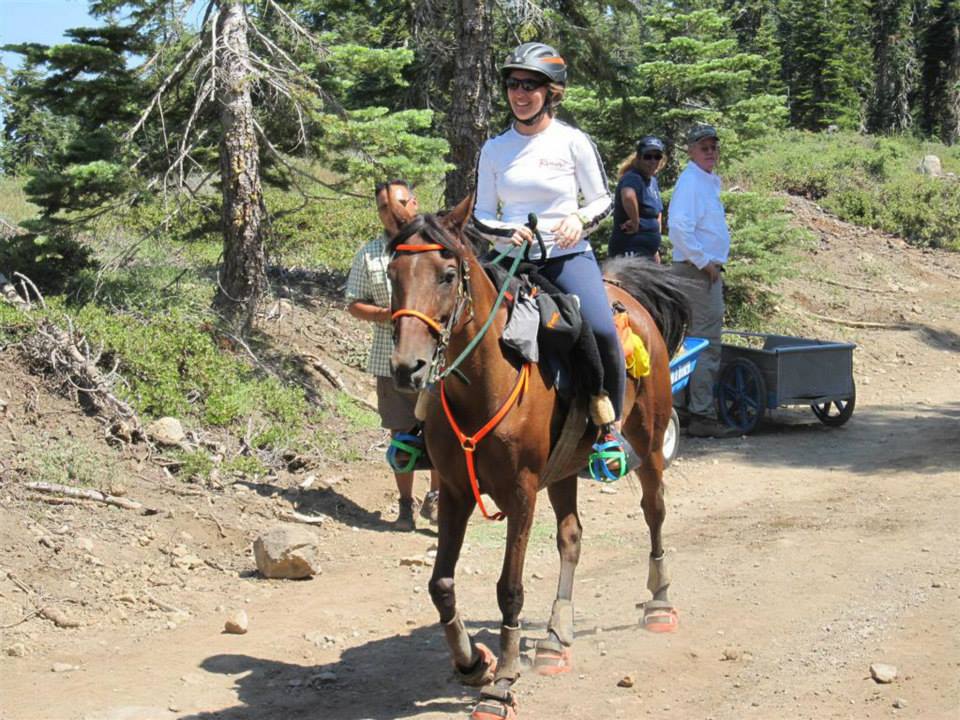
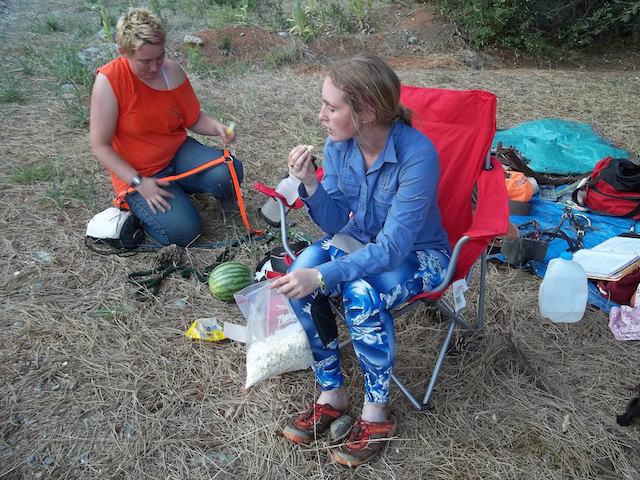
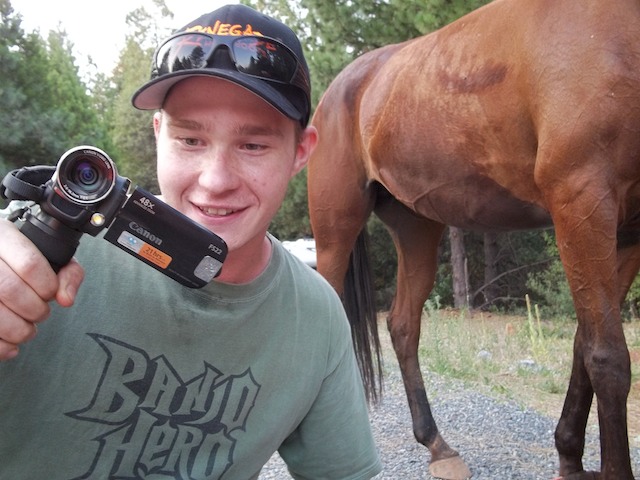
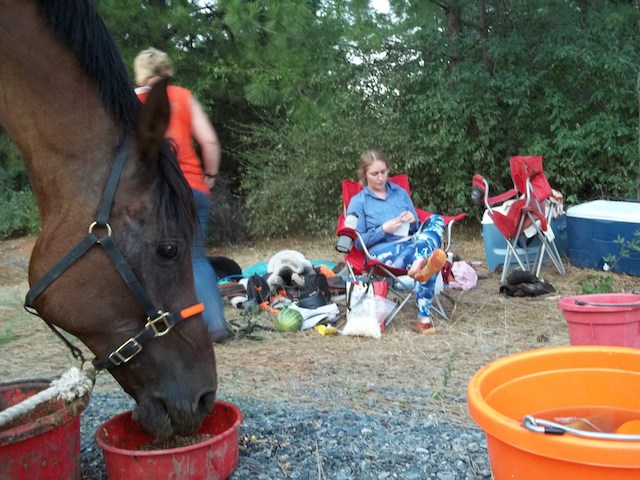


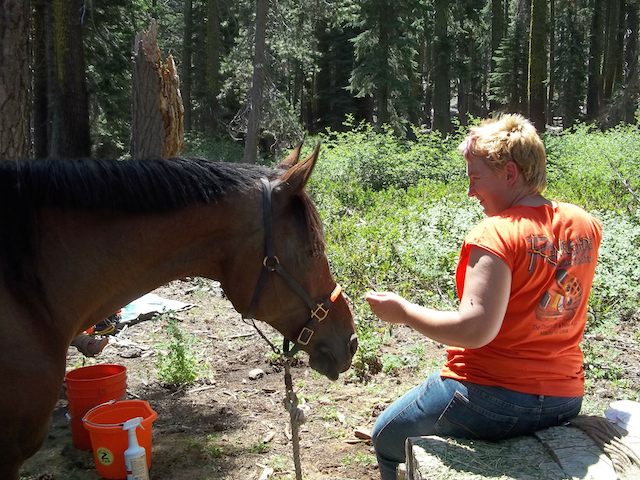
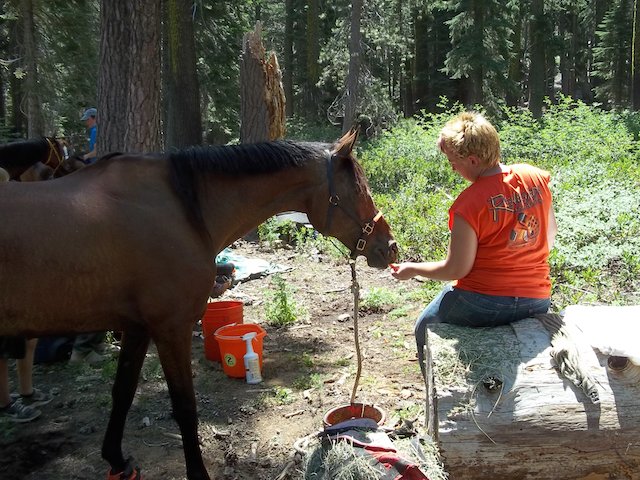
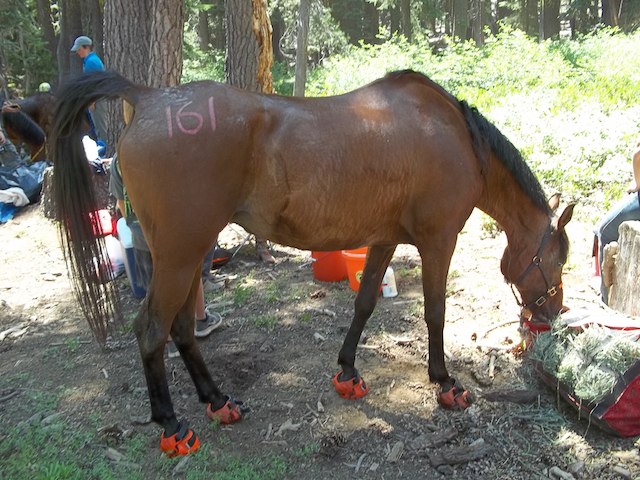
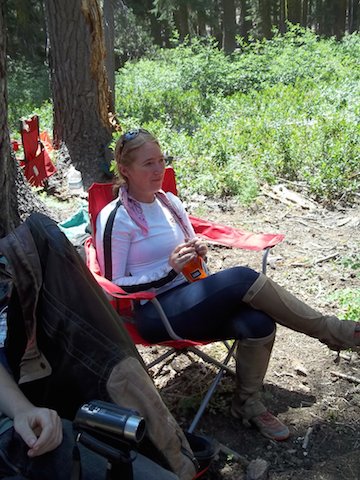









Except for RedStar, the other checks have horse food and water at both ends of the checks – I always vet through immediately so that I don’t have to worry about getting caught in a line and then go to the other end where my horse usually has plenty of volunteer help and less congestion because everybody else is spending their time at the other end prior to waiting. I think that doing that helped me get through the checks very efficiently. I have always passed far more horses in the vet checks than on the trail, and at least for my horse he relaxes and eats better when there is less congestion around him.
I think it really depends. Ive made a mistake of pulling my horse off a big mash to vet only to find no mash, just hay on the other side. And mash is what she really wants. In think handling the gate and gos is where the stay flexible thing is important. Based on where the glut of riders are (behind you or in line etc) different things may be more efficient. I totally agree I pass more people at the checks than on the trail!
Wanted to add for other mid pack riders that start at the back. There’s no telling how close your pacing for a ride is compared to mine, but as an FYI my splits between checks were very very very similar for all 3 of my starts. I started just before 5:30am about 5 or 10 min behind the bulk of people. At Redstar I pass a HUGE chunk of the field (My horse pulses down very quickly) that are still cooling, so I leave Redstar probably about two thirds in the pack. I don’t pass very many people on the trail – I pass them in the vet checks. (horse pulses down fast and I’m fairly efficient and she takes care of herself – eats and drinks fast and then is ready to move on). Usually by last chance/devil’s thumb I’m mid pack and maintain that as I go further on the trail.
I doubt I will ever do Tevis since it is on the opposite coast from me, but these are all good points no matter what ride you do. My big dream ride is the Vermont 100 and I am sure if I ever get there these points will still be valid.
Off topic: I have a burning endurance ride question for you. Would it be best to email you?
Yep, email me at [email protected] and then give me a couple of days. Facebook messaging is fine too.
#10. Gah. I’ve been waiting and wanting Tevis for so long that when it’s finally my year, I feel like I’m going to be a falling-apart wreck because it’s something I’ve been building up to for *years* now.
Do you remember, off-hand, which checks are the “one-way” ones that I can file away for future reference?
Red Star, Last Chance, Deadwood and the older Chicken Hawk used to be. CH has moved to a new location this year and the layout is different and more user friendly, but not positive on how it’s going to “flow” in real life. Some of these while “one-way” may have horse feed and water available after vetting, but most are set up so you take your break FIRST and then vet and go.
I would add that it’s very very very important to be efficient during the gate and go checks while maximizing the time the horse can eat and drink. So typically it’s more efficient to let the horse eat and drink PRIOR to the vet check instead of pulling them away, vetting and then trying to get them to eat and drink again. I usually watch the vet line and the pack moving through and vet through based on riders coming into the check – if I huge chunk of riders come in and I think she’s eat and drank enough to get to the next check off I go. Or if there’s a line, I wait and let her eat and drink and then when the line clears I vet through and then immediately start riding – a lot of people are messing around with stuff after the vet in instead of making trail time so I manage to pass more people and don’t have to worry about getting stuck behind them.
– just some different strategies I’ve used. it goes with that “make your own luck” concept.